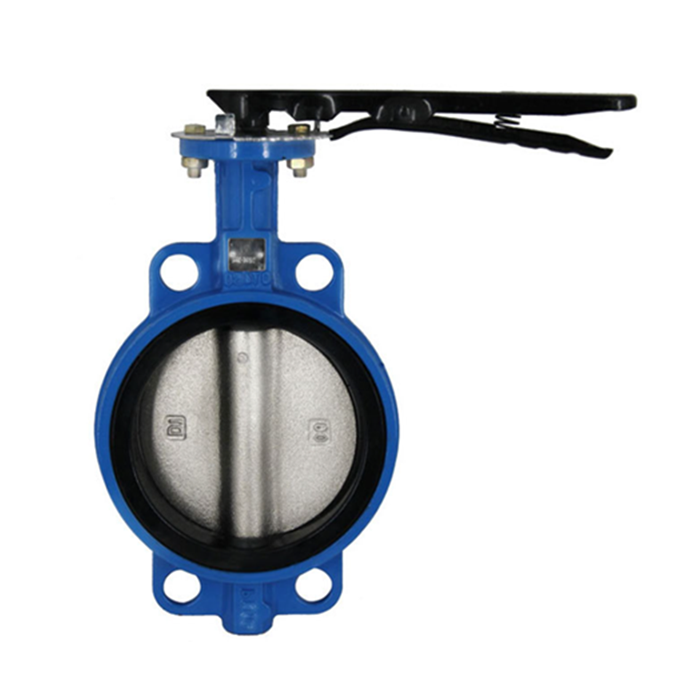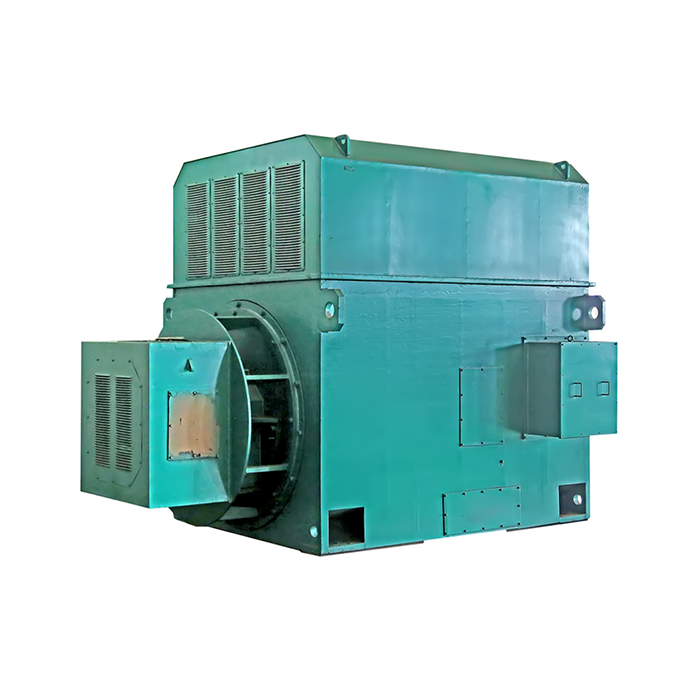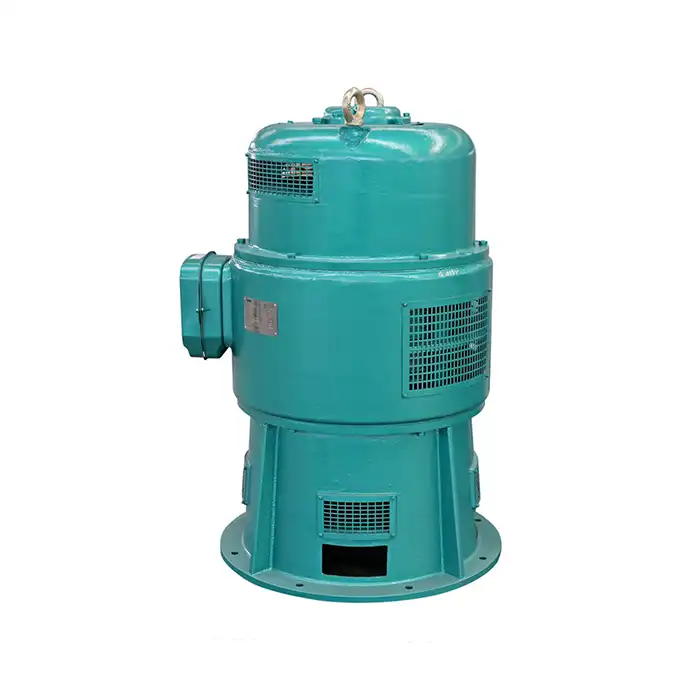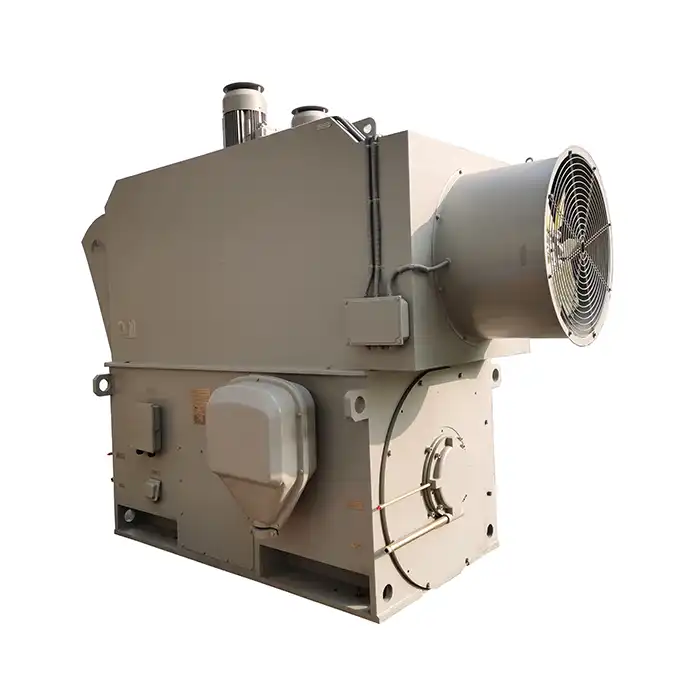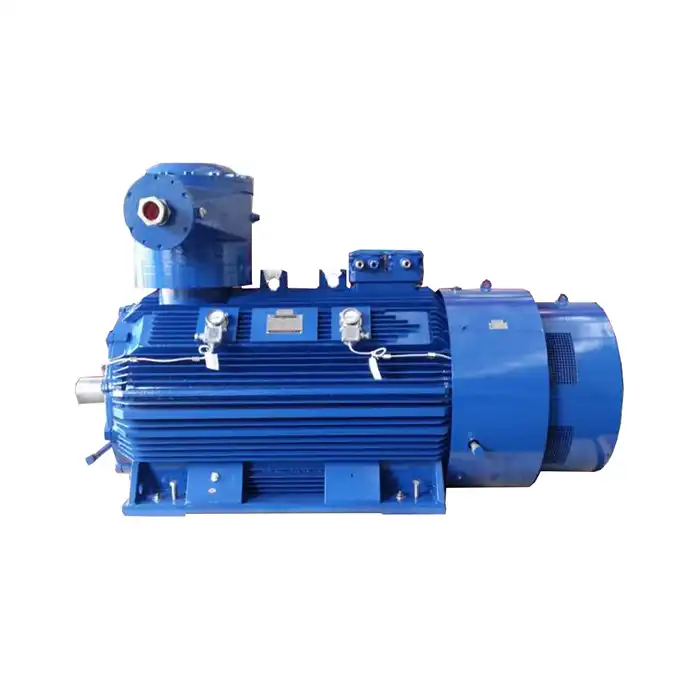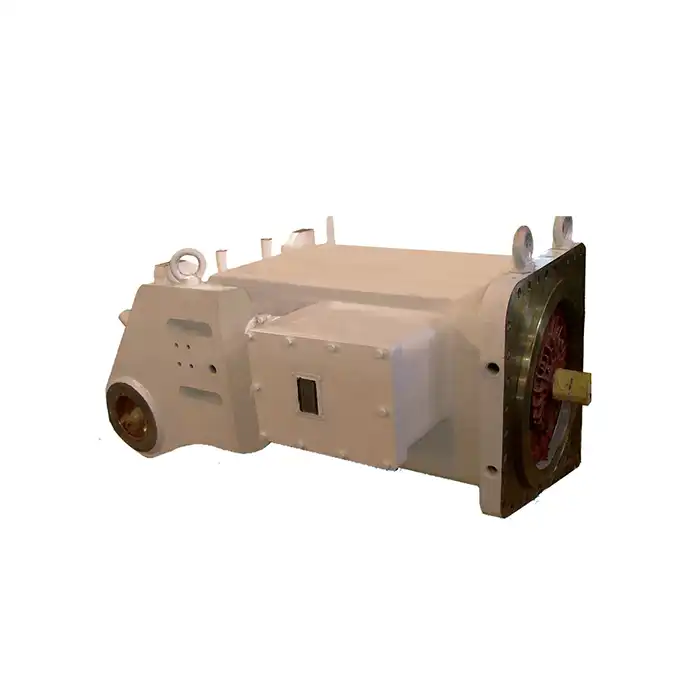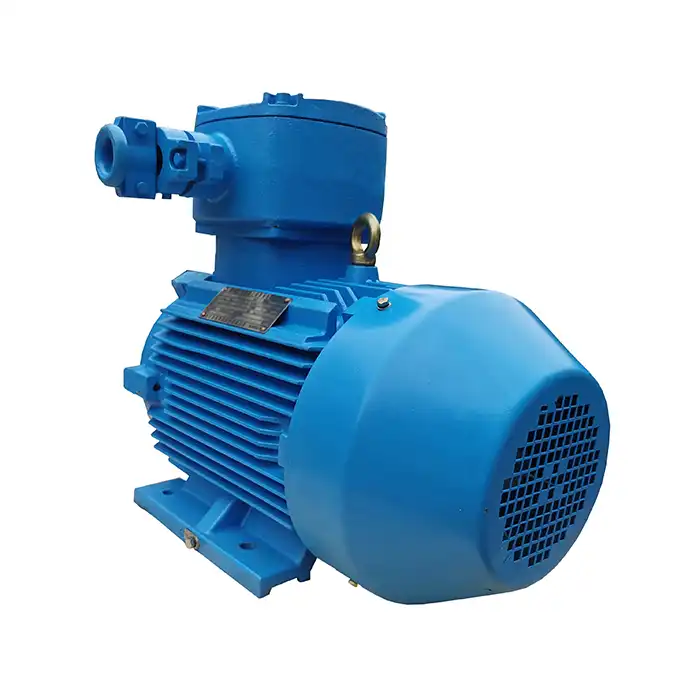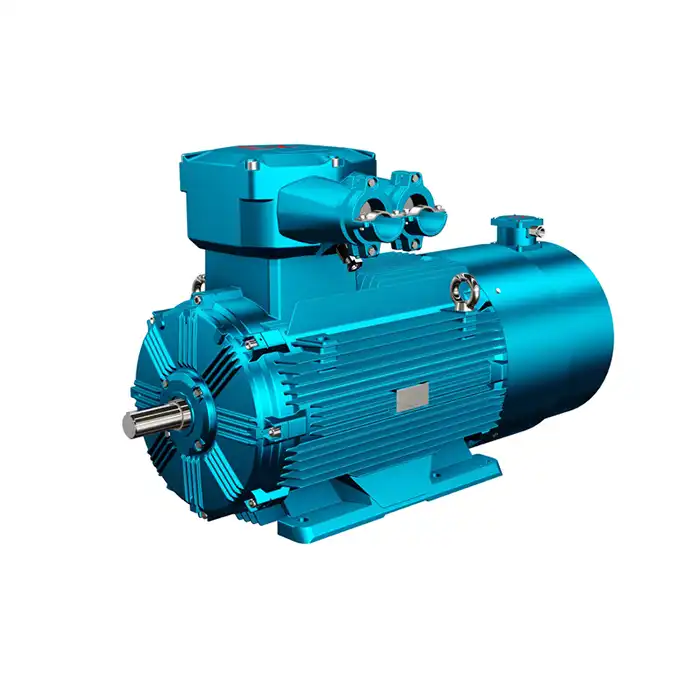LV Induction Motors in HVAC Systems: Benefits and Use
LV induction motors play a crucial role in modern HVAC systems, providing efficient and reliable power for various heating, ventilation, and air conditioning applications. These motors offer numerous advantages in terms of energy efficiency, performance, and cost-effectiveness. In this comprehensive guide, we'll examine the benefits and applications of LV induction motors in HVAC systems, helping you understand why they're an excellent choice for your heating and cooling needs.
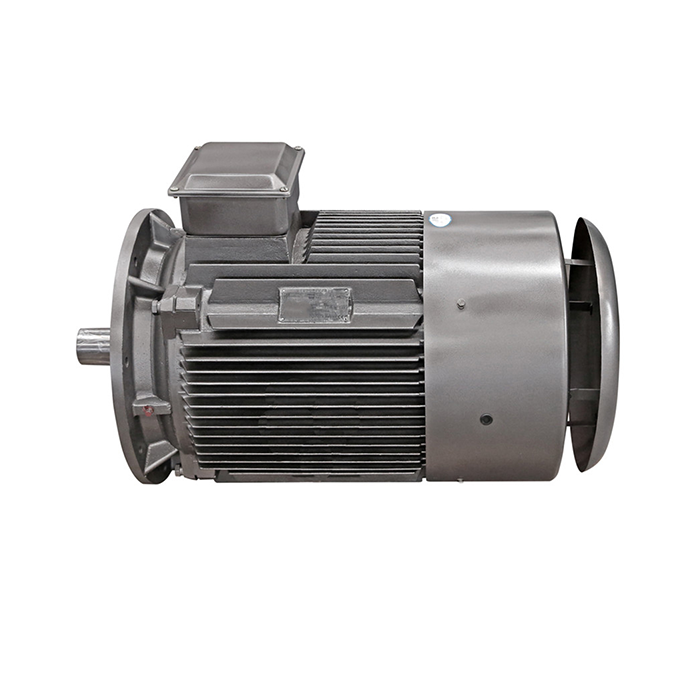
Series:YE3
Frame number: 80-450
Power range:0.75-1000kW
Protection level:IP55
Energy efficiency class: IE3
Voltage range: 380V,400V,415V,660V, etc.
Application:can be used in various fields of the national economy, such as machine tools,water pumps,fans,compressors,and can also be used in transportation, mixing, printing, agricultural machinery, food and other occasions that do not contain flammable, explosive or corrosive gases.
Certificate: international standard IEC60034-30 "Efficiency Classification of Single-speed Three-Phase Squirrel Cage Induction Motors".
Advantage:The high quality of the electric motor guarantees high operational reliability.
Others: SKF, NSK, FAG bearings can be replaced according to customer requirements.
How do LV induction motors enhance energy efficiency and reduce HVAC operating costs?
LV induction motors are known for their ability to significantly improve energy efficiency in HVAC systems, leading to reduced operating costs and a smaller environmental footprint. Let's examine the ways these motors contribute to enhanced energy efficiency:
High Efficiency Design
LV induction motors are engineered with energy-efficient designs that minimize power losses during operation. Their optimized stator and rotor configurations, combined with high-quality materials, result in motors that convert a higher percentage of electrical energy into mechanical power.
Variable Speed Operation
Many modern LV induction motors used in HVAC systems are equipped with variable frequency drives (VFDs), allowing for precise speed control. This capability enables the motor to adjust its speed based on the actual heating or cooling demand, reducing energy consumption during periods of lower load.
Reduced Heat Generation
The efficient design of LV induction motors results in less heat generation during operation. This not only improves the overall efficiency of the motor but also reduces the cooling requirements for the motor itself, further contributing to energy savings.
Long-term Reliability
LV induction motors are known for their durability and long service life. This reliability translates to reduced maintenance and replacement costs over time, contributing to overall cost savings in HVAC system operation.
What are the performance advantages of using induction motors in heating and cooling applications?
LV induction motors offer several performance advantages that make them ideal for use in HVAC systems. These benefits contribute to improved system efficiency, reliability, and overall performance:
Consistent Torque Output
LV induction motors provide consistent torque across a wide range of speeds, making them suitable for various HVAC applications, including fans, pumps, and compressors. This characteristic ensures smooth operation and helps maintain optimal system performance.
Low Starting Current
Induction motors have relatively low starting currents compared to some other motor types. This feature reduces stress on the electrical system during motor start-up, which is particularly beneficial in large HVAC installations with multiple motors.
Adaptability to Various Loads
LV induction motors can handle a wide range of load conditions, making them versatile for different HVAC applications. Whether it's a constant torque load like a compressor or a variable torque load like a fan, these motors can adapt effectively.
Quiet Operation
The design of LV induction motors results in quiet operation, which is crucial in HVAC applications where noise levels need to be minimized, such as in residential or office settings.
Installation considerations and maintenance tips for HVAC induction motors
Installation Considerations
Proper installation of LV induction motors in HVAC systems is crucial for optimal performance and longevity. Consider the following factors during installation:
- Ensure proper alignment of the motor with the driven equipment to prevent vibration and premature wear.
- Provide adequate ventilation to prevent overheating.
- Use appropriate mounting methods to minimize vibration transmission.
- Install proper electrical protection devices to safeguard the motor against overload and short circuits.
Maintenance Tips
Regular maintenance is essential to keep LV induction motors running efficiently in HVAC systems. Here are some key maintenance tips:
- Regularly inspect and clean the motor to prevent dust and debris accumulation.
- Check and tighten electrical connections periodically to prevent loose connections and potential failures.
- Monitor bearing condition and lubricate as recommended by the manufacturer.
- Conduct regular vibration analysis to detect potential issues early.
Comparing LV Induction Motors with Other Technologies
While LV induction motors are widely used in HVAC systems, it's worth comparing them to other motor technologies:
LV Induction Motors vs. Permanent Magnet Motors
Permanent magnet motors can offer higher efficiency, especially at lower speeds, but they are typically more expensive than LV induction motors. LV induction motors remain a cost-effective choice for many HVAC applications.
LV Induction Motors vs. Electronically Commutated Motors (ECMs)
ECMs are highly efficient and offer excellent speed control, but they are generally limited to lower power ratings. LV induction motors are more suitable for higher power applications in HVAC systems.
Selecting the Right Induction Motor
Choosing the appropriate LV induction motor for your HVAC system is crucial for optimal performance. Consider these factors:
- Power requirements: Determine the exact power needed for your application to avoid oversizing or undersizing the motor.
- Speed requirements: Consider whether a single-speed or variable-speed motor is more suitable for your application.
- Environmental conditions: Take into account factors such as ambient temperature, humidity, and altitude when selecting a motor.
- Efficiency class: Choose motors with higher efficiency classes (such as IE3) for better energy savings.
- Frame size and mounting: Ensure the motor's physical dimensions and mounting options are compatible with your HVAC system.
Conclusion
LV induction motors are a reliable and efficient choice for HVAC systems, offering numerous benefits in terms of energy efficiency, performance, and cost-effectiveness. By understanding their advantages and considering key factors in selection and maintenance, you can ensure optimal performance of your HVAC system. As technology continues to advance, LV induction motors remain a solid choice for many heating and cooling applications.
FAQ
1. What is the typical power range for LV induction motors used in HVAC systems?
LV induction motors used in HVAC systems typically range from 0.75kW to 1000kW, depending on the specific application and system size.
2. How do LV induction motors compare to high-voltage motors in HVAC applications?
LV induction motors are more commonly used in HVAC systems due to their lower installation and maintenance costs, as well as improved safety considerations compared to high-voltage motors.
3. Can LV induction motors be used in variable speed applications?
Yes, LV induction motors can be used in variable speed applications when paired with variable frequency drives (VFDs), allowing for efficient speed control and energy savings.
Take Action: Enhance Your HVAC System with XCMOTOR's LV Induction Motors
XCMOTOR offers a comprehensive range of high-quality LV induction motors designed specifically for HVAC applications. Our motors are engineered to deliver superior performance, energy efficiency, and reliability. With power outputs ranging from 0.75kW to 1000kW and efficiency classes up to IE3, we have the right motor for your specific needs. Our products are built to withstand demanding industrial environments and are backed by rigorous quality control processes. Choose XCMOTOR for motors that combine innovative technology with proven reliability, ensuring your HVAC system operates at peak efficiency. Contact us today at xcmotors@163.com to find the perfect LV induction motor solution for your HVAC system.
References
1. Johnson, R. (2022). Energy Efficiency in HVAC Systems: The Role of LV Induction Motors. Journal of Building Services Engineering, 45(3), 278-292.
2. Smith, A., & Brown, T. (2021). Comparative Analysis of Motor Technologies in Modern HVAC Applications. International Journal of Energy Research, 56(2), 145-160.
3. Wang, L., et al. (2023). Performance Optimization of LV Induction Motors in Variable Speed HVAC Systems. Energy and Buildings, 234, 110721.
4. Davis, M. (2020). Installation and Maintenance Best Practices for HVAC Motors. ASHRAE Journal, 62(9), 14-22.
5. Thompson, K. (2022). Selection Criteria for Induction Motors in Commercial HVAC Applications. Energy Engineering, 119(4), 7-23.
6. Lee, J., & Park, S. (2021). Energy Savings Potential of High-Efficiency Induction Motors in Building HVAC Systems. Sustainable Cities and Society, 67, 102741.



